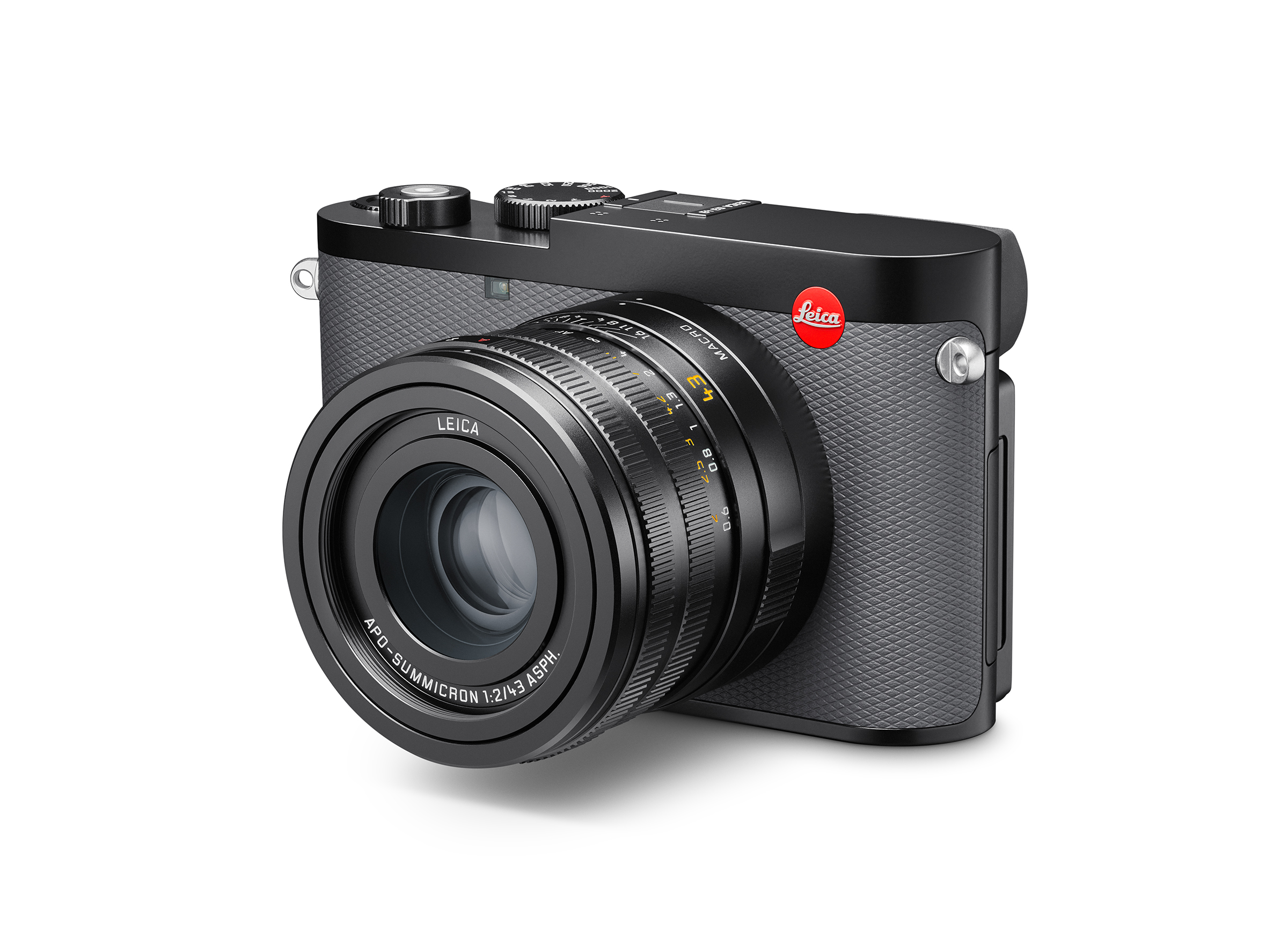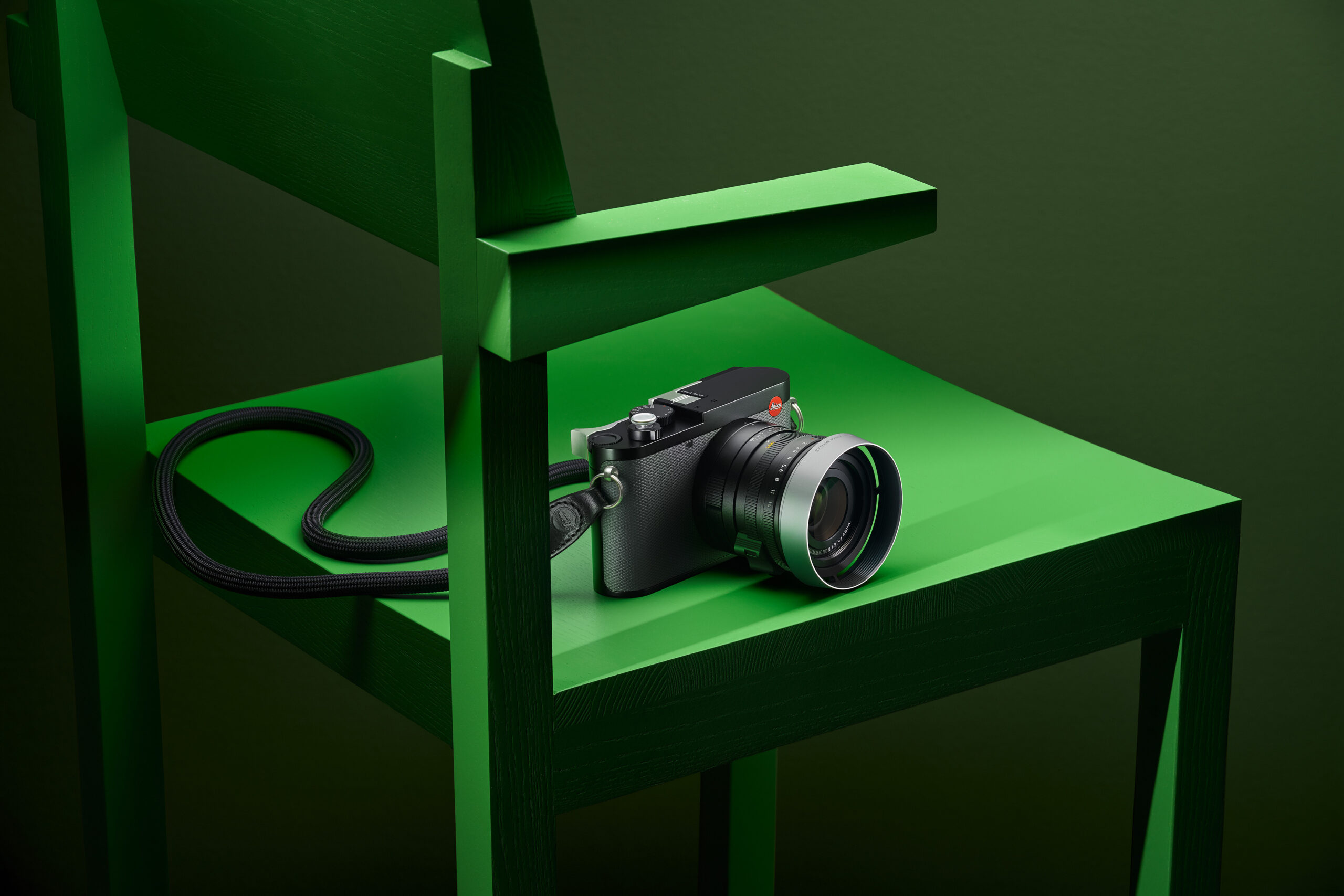The Leica Q-series has been a continuing success story since 2015, and it will be even more popular with the new Leica Q3 43. Even according to insiders, nobody at Leica had expected the enormous success of these fixed-focal length cameras. And now this success can grow, with a variation many Leica fans have been dreaming of. While most users have become accustomed to the wide-angle 28mm Q, there has always been a large body of potential buyers who were turned off. What they wanted was a nifty fifty Q.
They may not have got their heart’s desire, but the new Leica Q3 43’s 43mm focal length is near enough to keep them happy. At the same time, it offers a compromise between 35mm and 50mm that is becoming ever more popular. Ricoh has succeeded with the 40mm IIIx version of its popular GR. And let’s not forget that Leica once had a 40mm option in the film Leica CL, which offered frame lines for this unusual focal length.
What I find even more interesting than the camera — which is essentially a standard Q3 — is that Leica has introduced what promises to be a real stunner of a lens. The APO-Summicron in the Q3 43 is a triumph of lens design. Full apochromatic correction, providing better sharpness and resolution overall. Many newer Leica lenses, even in short focal lengths, have the APO label.
APO is no longer a telephoto thing
With ever higher-resolving sensors, this quality level becomes more and more significant. Some years ago, APO was supposed to be necessary only for telephoto lenses. And I hear from Jonathan Slack that this particular APO-Summicron is even sharper than the fabled 50 APO-Summicron-M. This was the pride of Leica’s lens line-up until the introduction of the outstanding 35 APO-Summicron-M close-focus.
A Leica Q3 variant with a fast standard lens…
At any rate, the Leica Q3 43 variant has a lens that can be classified as a standard optic — standard meaning with a focal length somewhat similar to the diagonal of its full-frame sensor. Thus, 43mm is the perfect equivalent, but everything between 40 and 50 would be recognised as a standard lens.
Our central angle of view — around 40-60° — is what most impacts our perception. Subjectively, this would correspond with the angle over which you could recall objects without moving your eyes. Incidentally, this is close to a 50 mm “normal” focal length lens on a full frame camera (43 mm to be precise), or a 27 mm focal length on a camera with a 1.6X crop factor. Although this doesn’t reproduce the full angle of view at which we see, it does correspond well with what we perceive as having the best trade-off between different types of distortion.
… with a not-so-exotic focal length

The widest, f/2, aperture is only a half stop slower than the Summilux of the Q3. This 28/1.7 was so good from the beginning that there was no need to improve it when the sensor grew initially from 24 to 47, and now to 60 Megapixels.
This new lens is nothing less than a sensation. The 43/2 APO-Summicron, with integral shutter and autofocus, follows more or less the external dimensions of the 28/1.7. It even shares the same filter and keeper-ring thread as the 28 Summilux, so that Leica’s pretty round hood fits both cameras.
And as for size, just consider the rather large interchangeable L-Mount lenses. The 35/2 APO-SL has roughly the volume and the weight of the complete 28mm Q3, including lens, battery and all. The 35/2 APO-SL alone weighs in at 750 grams, while the entire Q3 comes in at 743 grams!
Such a compact build is, of course, possible only because of the full integration of the lens into the body, both mechanically and electronically. So much for the hope of a Q with interchangeable lenses. Leica representatives have repeatedly told me that this is just impossible if the overall compactness is to be maintained.
A Q3 with all the great features
What else do we get? The rest of the camera is almost identical to the current and highly successful Q3. It has digital cropping options like the sister model, but taking things further because of the starting bar is higher. Where the Q3 encouraged users to crop to 90mm equivalent, the Q3 43 takes us even further, up to 150mm while still retaining a 5MP resolution. Image stabilisation is also on board, as well as the excellent electronic viewfinder. Without any of these features, it wouldn’t be a Q, would it?
Having read so much about the improved menu system on the SL3, including the customisable Control Centre icons, I did wonder whether the Leica Q3 43 would adopt the same changes. Sensibly, though, Leica has chosen to remain with the same system as that on the Q3 28. That way, there will be a seamless transition between the two models. I suspect many Q3 28 owners will take the opportunity to upgrade to the Q3 43 (or to extend their kits), and it’s important to make the change as easy as possible.
The Leica Q3 43 is a response to Ricoh and Fujifilm
Leica’s move is interesting because it appears that they have really listened to their customers this time. The wish for a Q with a longer lens is as old as the Q itself. While familiar to many photographers from their smartphones, the angle of view of a 28mm lens is not to everyone’s taste: Some photographers feel they get images with too much context, in which it’s challenging to control their main subject.
Thus, the 35mm option of the Fujifilm X100 series, albeit with a 23mm lens due to the APS-C sensor, is always intriguing. Sony also went for 35mm in their RX1 camera, which could not stand on its own against the Leica Q though. The Q3 43, with its Summicron lens, might also offer great bokeh options for isolating a close subject against a blurry background.
So, we now have a second Leica Q3. The Q3 43 “standard” complements the existing model — just the way Ricoh led with the GR III series. It first came with a 28mm equivalent lens, later a 40mm GR IIIx equivalent was added. This option was and still is a massive success, giving the now five-year-old GR III nothing less than a second lease of life. We can safely assume that Leica’s management and developers are looking closely at the market, and that Ricoh’s success (and courage) made some impression.
Better start saving for that Leica Q3 43
Unsurprisingly, the Q3 43 costs more than the original 28mm model, but, at £5,900, just £350 more in the UK, for instance. In Germany, the price is €6,750, that’s €500 more than the 28mm version. Apochromatic lenses don’t come cheap, as we know from Leica’s wonderful SL and M lenses. But buyers will take this into account in assessing the ’43, especially when they look at the prices of stand-alone APO lenses.
The APO-Summicron-M lenses are £7,120 | $8,495 | €8,090 (for the 35mm) and £7,420 | $9,295 |€8,390 (for the 50mm). On this basis, the Q3 43 looks to be quite the bargain — you get a first-rate camera and one of the world’s best lenses for less than a 50mm APO-Summicron-M alone.
All images in this article supplied by Leica Camera AG
Leica Q3 43 announcement with full technical specification and press release
Macfilos on the Leica Q3
Jonathan Slack’s full review of the Leica Q3 43
Join the Macfilos subscriber mailing list
Our thrice-a-week email service has been polished up and improved. Why not subscribe, using the button below to add yourself to the mailing list? You will never miss a Macfilos post again. Emails are sent on Mondays, Wednesdays, and Fridays at 8 pm GMT. Macfilos is a non-commercial site and your address will be used only for communications from the editorial team. We will never sell or allow third parties to use the list. Furthermore, you can unsubscribe at any time simply by clicking a button on any email.







Thanks, Joerg, for that fine article. One question, however, sticks in my mind. You wrote that the Q3 43’s “compact build is…possible only because of the full integration of the lens into the body, both mechanically and electronically. So much for the hope of a Q with interchangeable lenses. Leica representatives have repeatedly told me that this is just impossible if the overall compactness is to be maintained.” The question raised by that Leica statement is this: what about the Sigma fp and fp L cameras, both of which are arguably as small as the Q3 43 (or possibly smaller—their odd shape with EVF makes comparison difficult), in addition to being lighter, and both of which accept L-mount interchangeable lenses? Not to mention the late, lamented, Leica CL, which is not only smaller than the Q3 43, but accepts L-mount lenses and looks as if it would not have to be made much larger—if at all!—in order to house a full-frame sensor.
Thanks for posting this – something I’ve dreamed of! I checked the US dealer Adorama; apparently in the US this will sell for $600 more than the Q3. Adorama also have additional Leica supplied photos, but I don’t se it adding to what’s here.
Hmm — if I sell my M240 and Summicrom 50, the D-Lux Typ 109, a few Fuji lenses — I might just be able to afford this 🙂
I wonder how many non-professionals really can invest in something like this?
The Q3 43 is a good idea. But it is sure to be unobtainable, just like the SL3, Q3, and D-Lux 8.
Hi Gordon – I think there may be quite a lot around for the first few weeks . . . . Then I guess you’ll be right!
I have liked lenses in that range ever since I had a Rollei 35 fifty years ago. Now I make do with a Voigtlander 40mm f2 and Nikkor 45mm f2.8 P. Maybe I should also hang on to my 43-86mm Zoom-Nikkor?